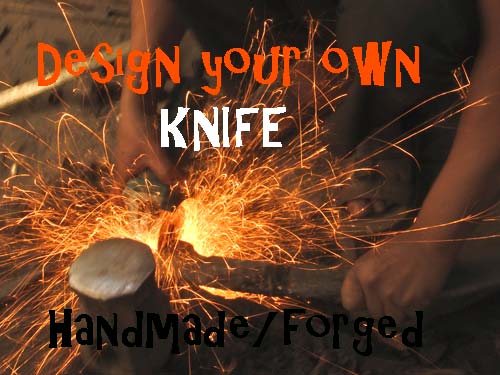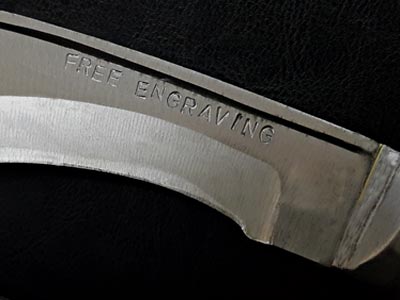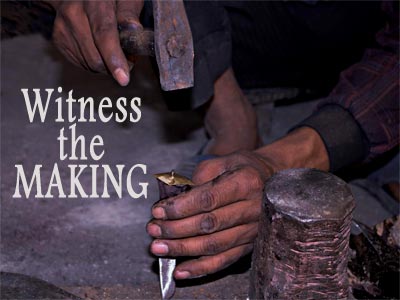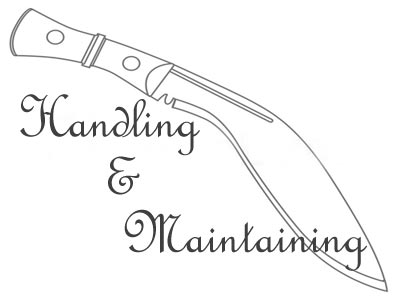Kukri Info
Origin, History & Beliefs of Kukri explained
Name and History
 Khukuri is the household name among Nepalese, this curved knife having a distinctive “cho” is the national knife of Nepal. There are two names that are now universally accepted for this knife “Khukuri” or “Kukri”, however, some even pronounce it as “Khukri”. It is believed to have been discovered in the early 1600’s. This knife is believed to have existed 2500 years ago; history shows that “Kopi” is the probable source of origin of the Khukuri that was used by Greek in the 4th BC.
Khukuri is the household name among Nepalese, this curved knife having a distinctive “cho” is the national knife of Nepal. There are two names that are now universally accepted for this knife “Khukuri” or “Kukri”, however, some even pronounce it as “Khukri”. It is believed to have been discovered in the early 1600’s. This knife is believed to have existed 2500 years ago; history shows that “Kopi” is the probable source of origin of the Khukuri that was used by Greek in the 4th BC.
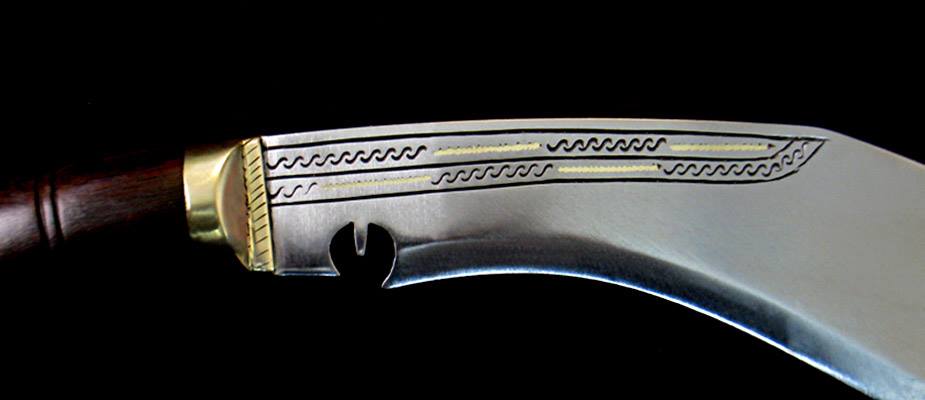
However, Khukuri came into the limelight after the Nepal War in 1814-15 after the formation of the British Gurkha Army. The khukuri is not only the national knife of Nepal but is also a symbolic weapon of the Gurkha soldier. The khukuri has been the weapon of choice for the Gorkhas of Nepal and the famous Gorkhali Sainik of King Prithivi Narayan Shah since the 16th century. The successful victory of the Gorkhali Sainik against its enemies must be credited to some extent to this knife. It is also believed that the universal custom of Gurkha Army carrying the khukuri began from Gorkhali Sanik and that was later made an important part of the military issue under the British ownership. This custom still exists although the size and type of khukuri have significantly changed and improvised.
The cutting ability of the khukuris was first experienced by the British from India who had to face the battles since 1814 against Gorkhali Sainik in western Nepal. During this battle, this small piece of curved steel became an incredibly frightening weapon.
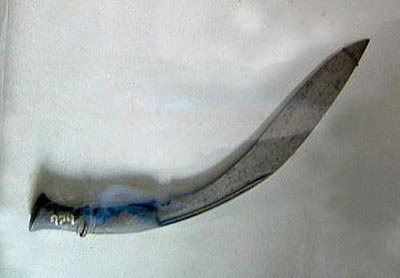 The oldest kukri known to exist is the one on display at the National Museum in Kathmandu which belonged to Drabya Shah, the King of Gorkha in 1627 AD. It is, however, certain that the origins of the knife stretch further back, way back to 2500 years
The oldest kukri known to exist is the one on display at the National Museum in Kathmandu which belonged to Drabya Shah, the King of Gorkha in 1627 AD. It is, however, certain that the origins of the knife stretch further back, way back to 2500 years
Kukri at Present
The Khukuri is said to be the extension of a soldiers arm. When his bullets run out, a Gurkha unsheathes his Khukuri, gives a cry “Aayo Gurkhali” which means Gorkhali is coming and makes his final "do-or-die" run, than the scene is created of romance and the legends.
Basically carried in a leather case, mostly having walnut wooden grip and traditionally having two small knives, it is one of the most famous and feared knives of the world. Besides being the national weapon and a formidable knife for Gurkhas, it is a versatile working tool of almost every household, especially of those belonging to Mongolian ethnic groups of central and eastern Nepal.
Khukuri is regarded as the symbol of wealth, status, and prestige in Nepal. It is also widely used as the national monogram and mark of level of ranking in security forces. 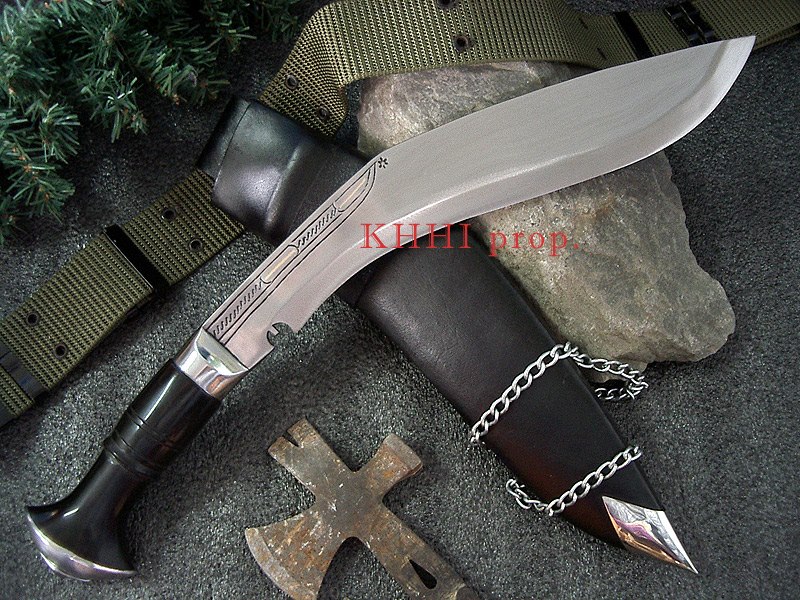
Beliefs
Khukuri is not only a mere weapon or a household knife in Nepalese society. It carries traditional beliefs, values, and myths within itself and also has strong religious significance. It is believed that a khukuri once drawn from its sheath must taste blood before it is re-sheathed.
Khukuri is also worshipped in different occasions and festivals and perceived as a dynamic icon of Hindu mythology. Khukuri is worshipped during Nepalese main festival Dashain, the khukuri is worshipped and is put to action of beheading domestic animals as offerings to the Goddess Durga.
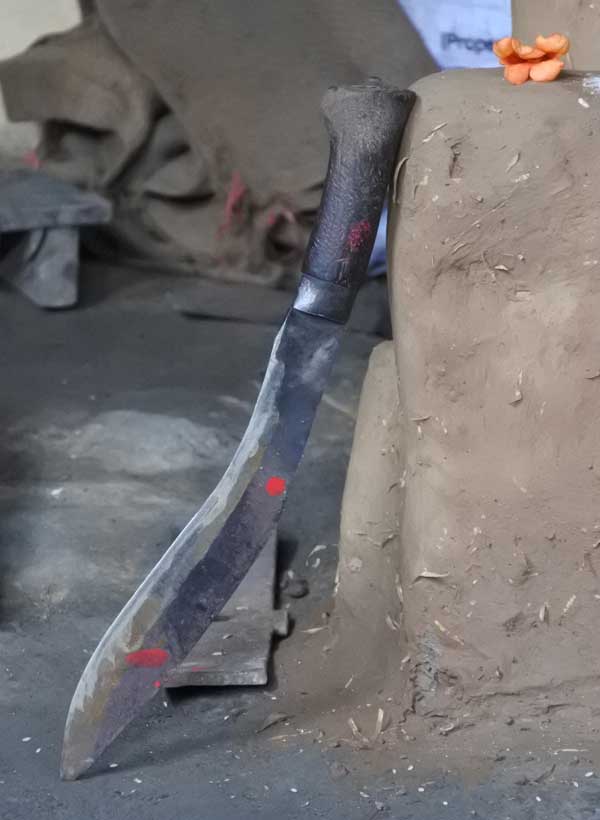
Similarly, in Biswakarma Puja, devotees worship khukuri along with other iron and steel tools to pay their respect and loyalty. Besides these, khukuri is worshipped prior to any sacrificial ceremonies as there is a belief in Nepalese society that khukuri must taste blood to become a true Khukuri. This sacrificial tradition also follows in the Gurkha Army where each year animals are sacrificed for good fortune and blessings to the regiments and its soldiers.
The trust on Khukuri in almost every household in Nepal is remarkable. A khukuri, when kept at home, bring fortune, prosperity, and kill evil spirits. The khukuri is believed to have spiritual power to scare off demons, evils, and nightmares and thus kept under the pillow of a man or especially a child who suffers from a sleeping disorder.
Similarly, in the Mongolian ethnic group, khukuri is cremated along with the dead man in a belief that the khukuri will scare away Satan and the departed soul can go to heaven and rest in peace.
There is also a saying by Padma Shamsher Jung Bahadur Rana, former Prime Minister of Nepal that "the khukuri is the national as well as the religious weapon of the Gurkha to carry it while awake and to place it under the pillow when retired."
Notch
The notch of kukri represents the “OM” sign or a cow hoof which are both of religious significance. The shape of the blade represents the Trinity symbols of Lord Brahma, Vishnu and Shiva.
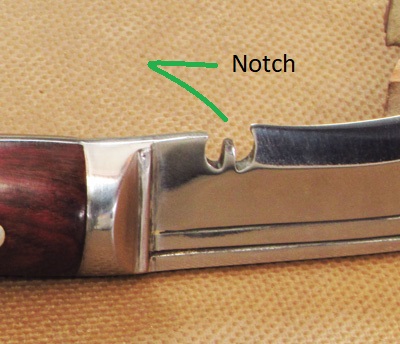
Useful Links
Best Sellers
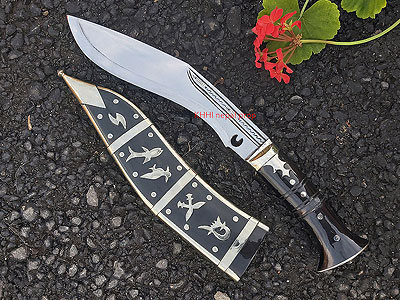
Nepal Dhankute Horn Khukuri (Ornate)
US $ 105.00
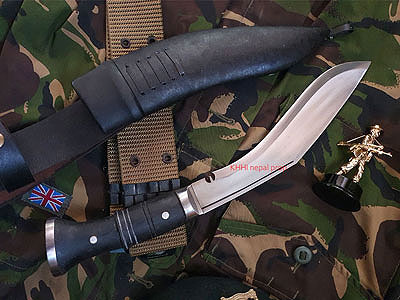
Service Panawal (PRO)
US $ 79.00
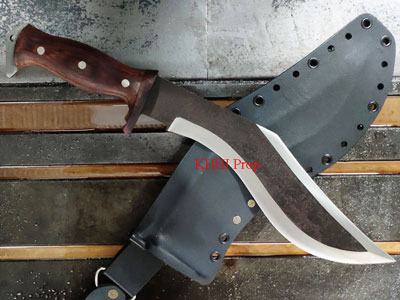
Chukuri Knife
US $ 125.00
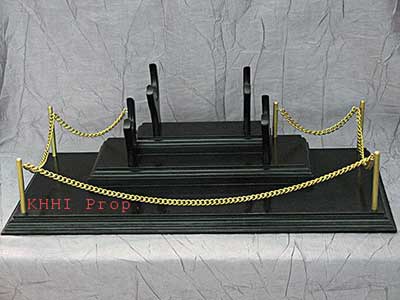
Exclusive Kukri Display Stand (Royal)
US $ 32.00

